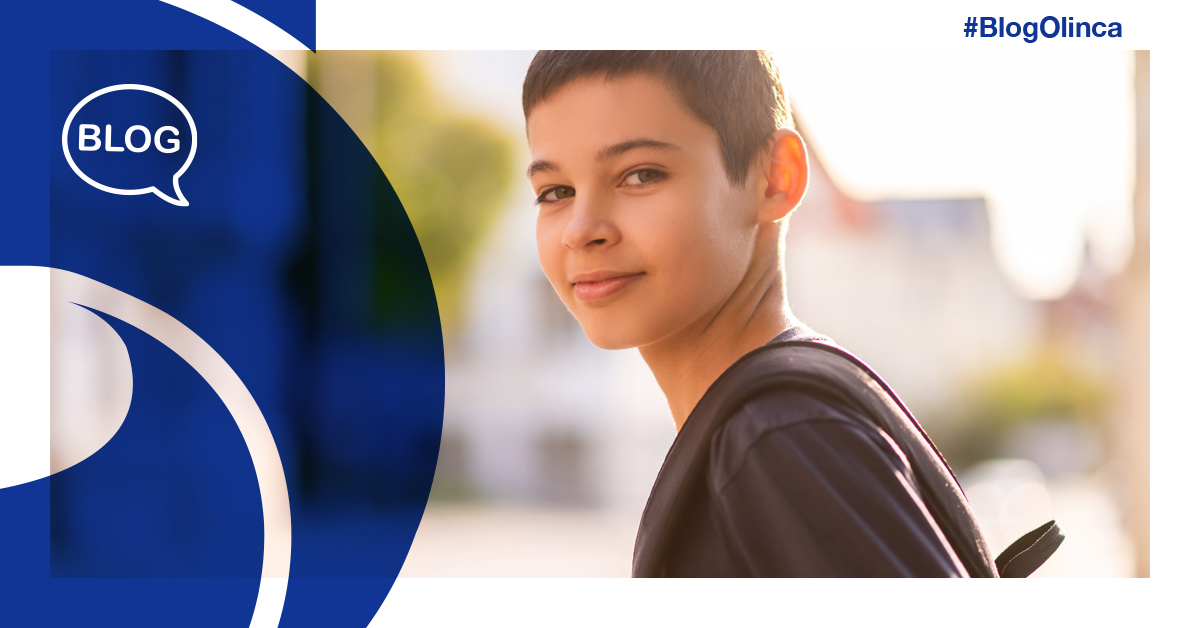Transition strategies must consider that for many children the move to secondary school coincides with puberty.
The importance of a successful transition
A positive start to secondary school has long-lasting benefits.
Young people who experience a positive transition into their new school are more likely to:
- feel comfortable, relaxed and valued
- feel excited and motivated to learn
- have good relationships with others
- develop a sense of belonging within the school community.
This positive start can make a big difference to young people’s school engagement, learning and wellbeing.
Understanding behaviour
The primary to secondary transition involves several changes.
The move into secondary school is one of the most significant transitions in a child’s education.
It involves various changes, including:
- changes in the physical environment
- new rules and procedures
- changes in relationships with peers, teachers and family
- more structured learning, with a variety of teachers and different learning environments to get used to.
This transition coincides with puberty.
At around the same time as the move to secondary school, children experience biological and emotional changes as they go through puberty (usually between 8 and 13 years in girls; with boys starting about six to 12 months later in this range).
The physical, social and emotional changes associated with puberty have a strong effect on children and young people’s relationships with friends, families and educators. This period of adolescent development is also related to emotions and behaviours that can lead to difficulties at school.
The timing of puberty at around the same time as the move to secondary school can make this a particularly demanding transition for some young people.
Common feelings and concerns
Children often have strong feelings about moving into secondary school. They may feel excitement about the prospect of going to a new school, as well as nervousness about what lies ahead.
Many children may also feel sad or angry about leaving their current school and the positive relationships they’ve established with educators and friends. Common concerns include:
- losing old friends and making new friends
- being bullied
- getting lost and getting to class on time
- remembering what books and other equipment is needed for each class
- following a timetable
- dealing with different educators
- homework.
Girls generally have greater concerns than boys about the transition. The good news is that these concerns lessen in the first year at their new school for most boys and girls
Some children find the transition can be overwhelming and need extra support.
Some warning signs that children may be experiencing difficulty include:
- withdrawal or difficulty participating in class discussions
- exhibiting low confidence or self-esteem
- increased avoidance of tasks
- having a short temper or behavioural outbursts
- difficulties with maintaining friendships
- being socially isolated.
Trusting and supportive relationships
Strong relationships between children, their families and educators enhance the wellbeing of children.
Primary and secondary schools should aim to develop effective transition policies. A genuine sense of partnership can help build understanding of each environment and help transfer information about students and families from one school to another. Here are some key points to consider:
- Establish, train and support a team of key people to coordinate transition practices.
• Establish and maintain relationships with wider school community networks and families.
• Ensure policies and practices reflect, and include, community diversity.
How can primary schools support a smooth transition?
Transition support and activities should start 12–24 months before students begin secondary school, with primary and secondary schools communicating in a handover process.
Some effective strategies to help support the transition include the following:
- Primary school educators can prepare all children for the transition – beginning in the year or years before moving schools. Strategies include talking to students about secondary school, visits from secondary school staff and students, as well as visits to the new school from the primary school.
- Teach students how to recognise their feelings and where to go if they feel they need help. Providing general problem-solving skills will help students during the transition, and beyond.
- Secondary school educators can help students settle into their new environment with orientation activities, such as study skills workshops, campus tours and identifying support resources, such as the student counsellor and year, in the secondary school.
- Educators can use the BETLS tool to observe behaviour to identify students at risk of a poor transition and subsequent disengagement from school. Research shows that primary school educators are good at identifying which students are likely to encounter difficulties with the transition to secondary school.
- Educators can connect with families – families have rich information about their child’s needs, which can inform planning of programs and strategies for individual students. Giving families suggestions for how they can support and develop their child’s social and emotional skills, coping and help-seeking strategies can also be helpful.
Some students need extra support and personalised strategies during times of transition.
Vulnerable students may be at increased risk of social and emotional problems and disengagement from school at this time.
Additional and personalised supports may be required for certain students, for example children who are homeless (or at risk of homelessness) or students living with a chronic illness or a disability.















